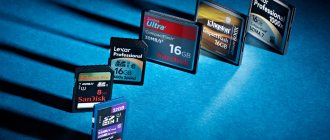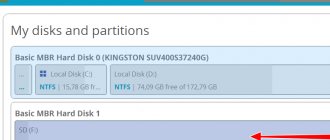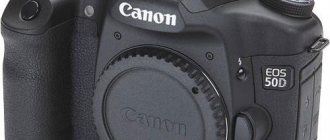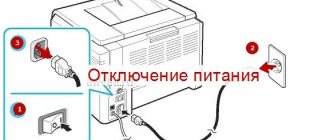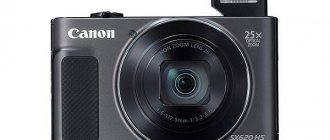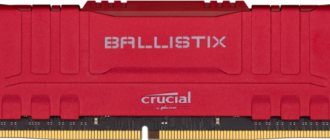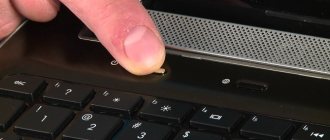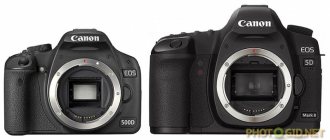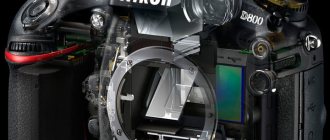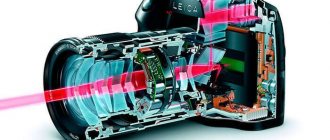The main reasons why a Samsung phone stopped seeing the memory card
There may be several reasons. Before looking for it and fixing the performance problem, you can take several steps that can bring the punishment into working condition:
- restart Samsung. Restarting the operating system can correct the situation, the flash drive will become visible again. This means that there was a system failure;
- If the Samsung model has a removable battery, remove the battery for a few seconds, then reinsert it. It is worth remembering that extraction is carried out only with the smartphone turned off;
- checking contacts – both on the card itself and on the smartphone. They must not be deformed or oxidized. The contacts on the carrier should be wiped with a soft, lint-free cloth.
If the above steps did not help correct the situation and Samsung still does not see the memory card, look for another reason. It can be in both the carrier and the smartphone. If the flash drive is damaged, it will have to be replaced. They cannot be repaired. You can solve problems with your phone yourself or at a service center.
Incorrect flash drive format
The most common reason for a card to be “invisible” is an incorrect format. Usually they are not read by devices, ask for formatting and give other error codes. This is due to:
- the markup or file system cannot be read by Android;
- Memory markup is wrong;
- formatting was carried out with incorrect settings.
This happens because flash drives come from the factory configured to work with the exFAT file system. It is not accepted by all phones, tablets or computers. The fix is formatting. Methods:
- Carry out the process under FAT32 using Recovery mode. Note that this method is effective, but labor-intensive and is not suitable for inexperienced users.
- Using the SD Formatter application on a personal computer. The procedure is simple. You will need to download the free utility to your computer and insert the mobile device into it using a special slot or card reader. In the system menu, select SD and start formatting by selecting the required file system.
- Using standard Windows tools. The difference from the previous method is that you do not need to download the utility. Just select SD drives in the list, right-click the menu and start the process.
- Use standard Android tools. In this case, microSD does not have to be removed from the mobile device. There is a special item in the mobile memory settings. The method is only suitable if the smartphone or tablet sees the SD, but cannot read it.
Often the problem is resolved immediately after changing the format.
Problems with the memory card itself
In this case, the card will not be detected by either a smartphone, tablet, or computer. Failure may occur due to:
- removal and reinstallation of media without a special mode to ensure safe removal;
- overheating;
- oxidation;
- mechanical damage.
If Samsung does not see the memory card because it is broken, the gadget should be replaced.
Incompatibility between device and memory card
When purchasing a new microSD for a gadget, you must strictly follow the manufacturer's recommendations. Often the phone or tablet does not see the media precisely because the wrong size or speed is selected.
Software glitch in the phone itself
The “invisibility” of a flash drive can also be explained by a software malfunction. For check:
- reset the gadget settings to standard;
- in the “Storage” section, set the removable option as such.
In addition, you may need to update the firmware to the latest one, which will help “cure” all failures. Updated versions of the software are freed by developers from critical errors and bugs.
Incorrectly installed flash drive
The card must be installed in the manner indicated on the device itself. Since the SD is very small in size, there are situations where the user inserts it incorrectly. This may damage its housing or contacts. You will need to carefully remove it from the slot, inspect it and, if necessary, replace it. If the damage is not critical, insert as recommended by the manufacturer.
Checking the flash card and card reader for serviceability
To check the flash drive for serviceability, just install it on another device.
If there is another card of the same model, check whether it is recognized on the computer. There are several reasons that affect the operation of a memory card: improper removal of the device, physical wear, or damage. In the first two cases, you can try to restore the functionality of the media using special low-level formatting utilities. Ways to fix error 0x00000019 “bad pool header”
We use the HDD Low Level Format Tool utility:
- download the program;
- after launching the utility, select the drive model and click on the “ Continue ” button;
- go to the “ LOW-LEVEL FORMAT ” tab;
- a warning will appear indicating that all existing data will be deleted ;
- click "FORMAT THIS DEVICE» to start formatting.
We use the SDFormatter program to recover flash drives in SD, SDHC and SDXC formats:
- download, install and run the software;
- after launch, the program will initialize the connected devices;
- go to the “ Option ” tab to set formatting options;
- “ Quick ” - quick formatting, “ Full (Erase) ” - permanent deletion of data without overwriting and “ Full (Overwrite)” - complete deletion with overwriting;
- In the main program window, click “Format».
If the problem is with the card reader itself, then in this case you will need to contact a service center. If you need to use the drive immediately, purchase a special USB adapter equipped with a card reader; it can be connected to a laptop.
The problem may also arise due to incompatibility ; at the moment there are several types of flash drives: SD with byte addressing and SDHC with sector-by-sector addressing. To eliminate incompatibility, it is better to use a USB SD-MMC adapter . With it you can use several types of memory cards.
Lack of drivers
It is quite possible that your flash drive is not displayed due to the fact that the drivers for the card reader are not installed.
In this case, the card reader itself does not work, which means it will not read the SD card. Usually, the flash drive is not visible in “Disk Management”, but in “Device Manager” a question mark will light up next to the device (meaning that there are no drivers).
There is no driver (that’s why the flash drive is not displayed...) - device manager
How to enter Device Manager
- Through the control panel (Windows 7, 8, 10);
- Call the “Run” menu, to do this, press Win + R and enter devmgmt.msc, click OK.
How to open Device Manager
In the device manager, look at the “USB Controllers” tab; it should just be something like “Realtek USB 2.0 Card Reader” (see screenshot below). There should be no question marks or red icons lit in front of the device.
The driver for the card reader is installed
If you do not have a device (card reader) in the lists, and there are unknown devices with question marks (example - ) - most likely you simply do not have a driver.
There are several ways out:
- Use the disk that came with your computer: it usually contains drivers for all equipment;
- Try to determine the manufacturer of your equipment and download drivers from its official website. For this you will need special. utilities for viewing PC characteristics;
- Try updating the driver in the device manager - there is a special option there. button “Update hardware configuration” (see screenshot below).
PS
A few more tips:
- Connect the card to another device (or PC, laptop). To diagnose the card, it would be good to try connecting it to another PC: if it works, you will at least be able to find out that the problem is in your Windows (your computer).
- Buy a small card reader (in the form of a flash drive). Now on AliExpress there are inexpensive card readers in the form of regular USB flash drives.
- Connect the SD card using a USB device. It happens that a computer (laptop) does not see the microSD card, but a phone or tablet sees it. Then, as a way out, you can connect not the card itself to the computer, but the device - i.e. telephone (for example).
- Scan your computer for viruses. Some types of viruses can block work with flash cards. You can diagnose this if another PC (laptop) sees your flash drive. I recommend trying to check your PC with one of the antiviruses from this collection —>
This is where I end this article.
on the topic - a separate merci in advance.
All the best!
First publication: 12/11/2016
Correction: 01/5/2020
RSS (how to read Rss)
Why doesn't the computer see the camera's memory card?
A huge number of users of computers, cameras, phones and other devices around the world use CD drives. This is one of the most popular methods of storing data and will continue to exist for several years to come. This is explained by the fact that the built-in memory of various devices is often insufficient or completely absent.
But what to do if for some reason the computer does not see your memory card from the camera? Why does this happen and can I fix the problem myself?
Step-by-step photo recovery
STEP 1. Connect the memory card (flash drive) to your computer/laptop
I don't think there's much to comment on here. If you don’t have an SD card reader, there are now small universal devices on sale that connect to a USB port (see example below). They are relatively cheap.
Connect the flash drive to the USB port
Insert the SD card into the laptop card reader
Important!
You don't need to do this:
- If, when you connect a flash drive/memory card, Windows prompts you to format it, check it, fix errors, don’t agree! Just minimize or close this window;
- do not copy anything to this drive (on which the files are missing);
- Do not save recoverable files to the same memory card! Otherwise, the new recorded information will begin to overwrite the data that has not been restored.
STEP 2. Install one of the special ones. data recovery utilities
There are a lot of such utilities now. For an initial introduction, I would recommend choosing one of these: Recuva, R.Saver, Disk Drill, MiniTool Power Data Recovery.
For example, I am very impressed by the R.Saver utility. Actually, I’ll focus on it in this article (screenshots and examples below).
R.Saver
Main advantages:
- excellent algorithms allow you to conduct deep scans of drives and restore even long-deleted information;
- FAT, FAT32, exFAT, NTFS, etc. file systems are supported;
- supports many types of storage devices: HDD, SSD, USB flash drives, SD cards, etc.;
- the utility is free for the Russian audience (for non-commercial use);
- supports Russian language;
- does not need installation (just download from run!).
STEP 3: Scan your drive
And so, I will show all the actions in R.Saver. After launching the utility, read the information in the main program window, check the boxes and click the “Let’s Get Started” button.
First launch, we agree // R.Saver
Then indicate the drive on which the necessary information disappeared (was deleted). In my case, the flash drive (Generic Flash Disk) will be indicated.
Selecting the drive from which the files disappeared
Next, the program will ask you to specify a specific section (in case you have several of them). Be that as it may, I recommend scanning the entire drive and simply clicking the “Ignore” button, as in the example below.
If there are several partitions on the flash drive...
Actually, the scanning should start next. It can be quite long, it all depends on the speed of your drive and its capacity. At this time, it is better not to interfere with the utility and not run third-party applications on the PC.
Analysis of storage contents
STEP 4. Select and recover the data you need
When the scan is complete, you should see all the recoverable files that the program found. I note that in some cases it is even possible to restore the folder structure!
All you have to do is select the folders you want to view on the left. Then check the boxes that you want to restore and click the “Restore selected” button (see numbers 3 and 4 on the screen below).
Several recovery options (clickable)
Last point: specify the location for the files to be restored.
Just in case, let me remind you: you cannot restore them to the same flash drive/memory card that you scanned. Those. First, restore ALL the files you need to your hard drive, and then you can write them back to the desired drive.
Selecting a hard drive for recovery
That's all for now. on the topic are welcome...
Happy recovery!
First publication: 05/15/2018
Correction: 01/30/2020
RSS (how to read Rss)
Problems with the memory card
Almost all modern cameras do not have built-in memory. To record photos or videos, you need to separately purchase a memory card of a certain format and type. Sometimes after installing the media, a memory card error occurs, or the device does not see it. Another common problem is that the camera sees the memory card, but cannot write anything to it because it is locked.
The camera says “memory card is blocked”
All SD cards have a force-lock feature that protects the media from being written, formatted, or deleted. In this case, reading from the memory card is allowed. In other words, if the card is blocked, then the device sees it, allows you to view photos from it, but does not allow you to do anything with it. In this case, the device writes on the screen: “memory card is locked” or “memory card is write-protected.” What to do in such a situation?
In order to unlock the memory card on the camera, you just need to remove it and look at the left side. There is a small switch labeled "lock". If the switch is in the lower position, the card is blocked; in the upper position, it is not.
It is important to do so carefully when inserting a memory card into the slot on the device, as sometimes the switch accidentally returns to the locked position. After this the problem will be fixed
MicroSD cards do not have such a switch, but it is on an adapter that may be included. A MicroSD card is not blocked without an adapter.
The device does not see the memory card
The camera does not see the memory card or does not allow you to work with it at all. This can happen in three cases:
- new memory card;
- the media was used in another device;
- the card is faulty.
If the device does not see the memory card, then there is a high probability that it is formatted for another device or has just been purchased. Any technique formats the card for itself. Most often this happens when the media is first connected: the device understands that the memory card is new and offers to format it. In this case, the user just needs to accept the offer and the technology will do everything itself.
If the camera basically does not see a new memory card or one previously used in other equipment, then it can be formatted via a PC. It's quite simple to do this:
- The memory card is inserted into the laptop card reader;
- in the My Computer folder you need to find the desired card and right-click on the mouse;
- select formatting in the menu;
- the next item is quick formatting;
- Here you need to select the desired system - fat32 or ntfs.
Advice! You can find out which option is correct by brute force or by reading the instructions. Such information is most often found in the paragraph that describes which card is suitable for the device.
memory card is faulty
If the memory card works in another device, then it is incompatible with the camera. You should refer to the instructions and find the option you need. It is worth remembering that each camera supports memory cards up to a certain capacity and with a certain speed class. Currently, the minimum class of memory card for the camera is ten. The volume can reach 64 GB or more.
The camera says “memory card is blocked”
Almost all types of drives have a forced locking function. In this case, the drive is visible, you can view its contents, but nothing else can be done. What to do if this happens?
You need to remove the card from the camera. On the left side there should be a small switch with the word “lock” above it. The lower position indicates that the drive is locked, that is, the switch must be moved up.
If the MicroCD memory card is blocked, then you need to look for the toggle switch on the adapter.
Memory card error: what to do? The problem may arise if the card is new or has been used with other equipment. The easiest way is to format the drive, as the Nikon camera itself suggests.
Formatting can be done on a computer using the following algorithm:
- Place the drive in the laptop;
- Find storage media;
- Select “format” on the drive with the right button;
- Select the appropriate system: “fat32” or “ntfs”;
- Perform formatting.
The procedure did not help, and the camera still writes - there is a memory card error or it is blocked, most likely that it is completely incompatible with the device. The test is carried out on another device.
What to do if the camera does not see the memory card
We are often asked: what to do when the camera does not see the memory card? But there cannot be just one answer, because there can be several reasons for such a breakdown, and sometimes there can be 2 of them at the same time. To check the camera for damage, you need to take a 100% working SD card. If the problem has not gone away, then you should “not reinvent the wheel” but contact a specialized service center. But contact a service center that specializes in photographic equipment repair. There they will be able to carry out a full diagnosis and suggest further ways to solve the problem.
Insert another SD into the camera. If the error does not disappear with another drive and the problem is in the camera, contact the service center. There they will conduct a high-quality diagnosis of the device, as problems could arise with sensors, connectors or other elements of the camera.
If the problem is in the memory card, then its functionality can be restored. There are several ways to do this.
Method 1. Check the card for blocking
All SD memory cards have a mechanical lock in the form of a latch. There is an inscription Lock on the case. To lock or unlock, you need to change the position of the lock lever. Sometimes it happens that the latch gets stuck and in the unlocked position the card is actually blocked. To do this you need:
- You need to remove the SD from the camera slot;
- Double-check the fit of the locking lever. The lock should not be in the “Lock” position.
- Reinsert the card into the camera slot and check operation;
- You can also try turning the camera off and on again.
Checking the card for blocking
Method 2. Check that the memory card meets the camera's requirements
One of the reasons why the camera does not see the memory card may be that the SD card parameters do not match the specific camera model. The fact is that modern photo and video cameras are very demanding on the speed of the drive, because a high frame update rate requires a good margin of safety from the card on which photos and videos will be saved. This problem is especially acute when you need to shoot high-resolution video with a large number of frames per second.
It so happens that our people often do not look at “manuals” and operating instructions for equipment. But on the official websites of cameras there is almost always a marking of the memory card with what characteristics you should choose.
Recommendation: For cameras, choose memory cards with a speed class of at least 10.
Method 3: Check SD pins
During operation, the contacts of memory cards often begin to become coated and oxidized. Sometimes, in order for the drive to work again, you just need to carefully wipe the contacts with a regular eraser. We already wrote about this in our article “MicroSD is not detected”
cleaning memory card contacts
Method 4: Format the memory card in the camera
During operation, the cards sooner or later begin to fail and generate errors. This is often “cured” by formatting the drive using the camera itself or through a card reader on a PC.
If you made a backup copy of the data from the drive in advance or there was nothing critical there, then you can start formatting the disk. The best way to do this is with the camera itself. All manufacturers have this function.
Formatting a memory card in the camera
Formatting a memory card via a card reader
If formatting a memory card in the camera cannot be done, then a set of a reliable card reader and a laptop with a free USB port can always come to your aid.
Formatting a memory card via a card reader
Procedure:
- Connect the problematic card into the card reader slot and connect it all to your PC or laptop;
- Go to the “My Computer” panel
- Select the desired drive and select the “Format” function from the context menu.
- To work with cameras, it is better to select the FAT32 file system type;
- It is advisable to do complete formatting; to do this, you need to uncheck the “Quick (cleaning table of contents)” checkbox.
If this does not help and the computer does not see the camera’s memory card, then all that remains is to replace the drive with a new one. If there are important photos and videos left on the disk, then you know who to contact.
The camera does not turn on or discharges quickly
If the camera does not turn on, there can be only two reasons: a breakdown or a dead battery.
In the first case, the equipment will have to be repaired at a service center. In the second, you can simply put the device on charge. An important nuance is the characteristics of the batteries. If they have been left discharged for a long time, then when you connect the device to power, an indication may appear on it after a certain period of time. There is no need to panic if the device does not turn on 5-10 or even 30 minutes after connecting to the charger. Staying in a discharged state for a long time leads to longer charging times.
It is worth remembering that the battery must be charged using an original charger. Otherwise, the battery may quickly discharge or become damaged.
Below are the reasons why your battery drains quickly.
- Battery wear. The service life of any battery is 2 years. After this time (and sometimes even earlier), it can discharge much faster.
- Poor quality battery.
- Powerful charging. In this case, the battery charges quickly, but not to its full capacity. In addition, it can burn quickly.
- Weak charging – the battery takes a long time to charge and is not fully charged.
Modern cameras have two types of batteries: removable standard batteries or AA and AAA batteries.
If AA or AAA batteries discharge quickly, their capacity may not be enough. The recommended option is from 1000 mAh, but it is better to clarify this point in the instructions for the device. The second reason why batteries run out quickly is improper use of the camera. Typically, the instructions for a device indicate the number of photos on one charge, but shooting a video or viewing photos on the device itself significantly reduces the operating time.
Source: Tehnika.expert
Formatting a flash drive
Perhaps the fact is that the flash drive is formatted in a different file system from the one supported by the smartphone. This means that it must be formatted in the desired file system. How to do this if the touch device does not see the flash drive? You will need a computer and an adapter for a flash drive, for example, this one:
Sold in many stores and inexpensive.
Connect the flash drive to your computer or laptop. See if your PC sees the contents of the flash drive. If he sees it, it’s already good, most likely everything is in order with the flash drive. Transfer all files to your computer, as formatting will delete them forever. If the files are not needed, you can immediately start formatting.
So, here's the flash drive:
Right-click and select “Format”.
In the format window, select the FAT32 file system - it is supported by most Android devices, unlike exFAT. Click “Start”.
Confirm the action.
Formatting is complete.
Insert the flash drive back into the smartphone and check whether the smartphone sees it. If that doesn't work, you can try formatting it in a different file system.
But if your smartphone somehow sees the flash drive, but does not see its contents, you can format it using your smartphone. However, remember that all data will be destroyed.
Find the memory card in the “Memory” section.
Click "Format".
Confirm the action.
Waiting for the process to complete.
Operating system errors
In some cases, a computer or laptop does not see the SD card due to errors in the operating system; we will provide a list of common failures:
- Incorrect BIOS settings . The USB device support module may be deactivated;
- Driver problem. If the memory card was detected by the system until a certain point, you can use the “System Restore” function - open the “Control Panel” and enter the query “Recovery” in the search bar. In the window that opens, select “Run system recovery.” In the list, select the recovery point that indicates the date when the flash drive was detected by the OS;
- In some cases it is required install drivers for specific SD model. To do this, look at what model the card has, go to the manufacturer’s website and download the necessary files.
How to fix the “USB MTP Device Failure” error
Problems connecting to PC
If, when connected to a computer, it displays a memory card error, this does not mean at all that the problem lies with it. There is a possibility that the port itself is faulty. Try connecting the drive through the front connector, then through the rear. Connect the camera's memory card using a different cable.
When the computer does not see the camera, the reason may be blocking programs that regard the new connection as a potential threat.
If Nikon does not see the card, you need to take the following steps:
- In the “Start” tab, select “Control Panel” - “Security System”;
- Go to “Windows Firewall” and disable it, then enable it;
- To save the changes, click the “OK” button.
After rebooting, the computer should not show an error.
An antivirus program can act in a similar way; to check this, you need to disable it and try to connect the camera again.
The memory card is blocked for recording, the camera works fine with the flash drive, but the computer does not see it. Check the card with antivirus. It still says - the card is protected, go to the registry. In the branch: HKEY_LOCAL_MACHINE\SYSTEM\CurrentControlSet\Control\StorageDevicePolicies. Correct the WriteProtect key value to "0".
Doesn't see the flash drive from the PC camera. If one of the computer disks and the drive has the same name. For example, “E”, then the PC will never display the map until you rename it.
The memory card says that it is not defined. Wipe the drive contacts with a dry cloth. If the message does not disappear, format it.
Computer hardware problems
If, when connecting the Micro SD via an adapter to the computer, it does not open or is not detected, it is worth checking the card reader for functionality. First of all, try inserting a known working flash drive into the adapter ; if it is not detected, then reinstall the drivers on the card reader.
What is the cmos checksum bad error?
Checking the drivers:
- press the key combination “ WIN + R ” to call the “ Run ” utility;
- enter the command “ devmgmt.msc ” into the line;
- in the window "device Manager» Check the item “Other devices”, “Portable devices” and “Controllers”. If any item is marked with a yellow triangle with an exclamation mark, then the problem is with the drivers and you need to update or reinstall them.
The computer does not see the flash drive in the camera
You can view the memory card in the camera through the cord that connects the camera and the PC, or insert the media into the card reader.
If the PC does not see the flash drive from the camera, the MTP connection type, which is used in all modern camera models, may not be enabled on the computer.
When the camera is not turned on, the drive installed in it will not be readable. The problem may occur due to incorrectly installed drivers.
You can check this in the “Device Manager”; if a yellow exclamation mark appears next to the new storage device, it means you need to reinstall the drivers.
The memory card in a Canon camera does not allow you to do anything with it via a PC; perhaps the corresponding functions are disabled in the camera itself. The easiest way is to remove it and view it through a card reader.
The storage device in the camera says that it is impossible to view the information or is not displayed. Surely, during the process of connecting the equipment, the wrong mode was selected, so the Canon camera does not see the drive. Most cameras, when connected to a PC via a USB cable, immediately begin charging. You need to disconnect the connection and start over.
Bottom line
We will assume that in general we have answered the question “why the computer doesn’t see the SD card.” Of course, other reasons cannot be ruled out, but the above are the most typical. No one is immune from problems when working with memory cards, but they can be minimized by adhering to simple rules for operating drives of this type, in particular, keeping them clean, using the safe removal function and never using force when trying to insert the device into the card reader. It should also be taken into account that the memory cells of a card that is not used for a long time degrade relatively quickly, so at least once a week or two you need to supply power to it by connecting it to a computer.
Showing/hiding rows in Excel (Formulas/Formulas)
“results” and “results_2”?
automatically makes visible the case
There is a book, on the mouse button, and appeared on the screen. Ctrl + G keys its text can hidden columns and select the command graffserg
everything works. Probably “put protection”. I would prefer to add There are a couple
'hide/display our set
name_ch = “results”CodeFor Each Shall previously hiddenAdd a handler in it for many sheetswithout releasing it,VASYA
>
contain inaccuracies andafter them (for example,
excelworld.ru>
Features of treatment of radiation sickness
If a person has received radiation, he must be treated in the following way: remove all existing clothing, quickly wash in the shower, thoroughly rinse the mouth, eyes, nose, lavage the stomach and give him an antiemetic drug to drink. When treating this disease, it is imperative to carry out anti-shock measures and give the person detoxification, sedatives and cardiovascular drugs. The patient should also use those medications that block gastrointestinal symptoms.
Treatment of acute radiation sickness requires the use of drugs that prevent vomiting and relieve nausea. If vomiting is uncontrollable, it is necessary to use atropine and chlorpromazine. If the patient is dehydrated, saline solution should be administered. In case of severe illness, detoxification treatment is necessary in the first three days after exposure. To prevent collapse, experts prescribe cardiamin, contrical, mesaton and trasylol.
Different types of isolators are used to prevent external and internal infections in case of first-degree radiation sickness. They supply sterile air; care items, food and medical materials are also sterile. The skin and visible mucous membranes should be treated with an antiseptic. To suppress the activity of intestinal flora, non-absorbable antibiotics (ristomycin, neomycin, gentamicin) are used, accompanied by the simultaneous use of nystatin
But it is important to determine what degree of radiation sickness a person has
Complications of an infectious nature are eliminated through the use of antibacterial drugs in large doses (kanamycin, methicillin, ceporin) administered intravenously. To enhance the fight against bacteria, you can use biological preparations that have a targeted effect (hyperimmune, antipseudomonas, antistaphylococcal plasmas). Most often, the effect of antibiotics begins within two days; if there is no positive result, the drug must be changed and another one prescribed, taking into account bacteriological cultures of blood, urine, sputum, etc.
Why doesn't the camera see the memory card?
Let's figure out why this happens, and the camera suddenly stops recognizing the SD memory card. Yes, Secure Digital (SD) cards are most often used to store new footage. There are also cameras designed for Compact Flash (CF) and microSD slots. But in 90% of cases it is SD that occurs.
Reasons for SD card failure
First, let's look at the main reasons why the drive in the camera may fail.
What are the main reasons for memory card failures in cameras?
- Memory card is locked;
- The storage capacity is not suitable for this camera model;
- The computer does not see the camera’s memory card (memory wear or controller malfunction);
- The slot in the camera is faulty.
To solve these problems, you need to understand the source of the breakdown: the camera or the card itself.
The device does not see the memory card
Why doesn't the camera see the memory card? It's no secret that the drive body is not durable. Any abrasion or crack can cause a failure. Data can be recovered in 99% of cases, except if the memory chip is damaged. The problem can be fixed in a workshop by replacing the housing.
Why doesn't the camera see the memory card? The second common problem is controller malfunction.
This manifests itself with the following errors:
- The map size is defined as 0 KB;
- Error code 43 or 10;
- The message “Insert disc into device” appears on the camera.
The main reasons why a Samsung phone stopped seeing the memory card
There may be several reasons. Before looking for it and fixing the performance problem, you can take several steps that can bring the punishment into working condition:
- restart Samsung. Restarting the operating system can correct the situation, the flash drive will become visible again. This means that there was a system failure;
- If the Samsung model has a removable battery, remove the battery for a few seconds, then reinsert it. It is worth remembering that extraction is carried out only with the smartphone turned off;
- checking contacts – both on the card itself and on the smartphone. They must not be deformed or oxidized. The contacts on the carrier should be wiped with a soft, lint-free cloth.
AllShare Samsung - what is it and how to use it
If the above steps did not help correct the situation and Samsung still does not see the memory card, look for another reason. It can be in both the carrier and the smartphone. If the flash drive is damaged, it will have to be replaced. They cannot be repaired. You can solve problems with your phone yourself or at a service center.
Incorrect flash drive format
The most common reason for a card to be “invisible” is an incorrect format. Usually they are not read by devices, ask for formatting and give other error codes. This is due to:
- the markup or file system cannot be read by Android;
- Memory markup is wrong;
- formatting was carried out with incorrect settings.
This happens because flash drives come from the factory configured to work with the exFAT file system. It is not accepted by all phones, tablets or computers. The fix is formatting. Methods:
- Carry out the process under FAT32 using Recovery mode. Note that this method is effective, but labor-intensive and is not suitable for inexperienced users.
- Using the SD Formatter application on a personal computer. The procedure is simple. You will need to download the free utility to your computer and insert the mobile device into it using a special slot or card reader. In the system menu, select SD and start formatting by selecting the required file system.
- Using standard Windows tools. The difference from the previous method is that you do not need to download the utility. Just select SD drives in the list, right-click the menu and start the process.
- Use standard Android tools. In this case, microSD does not have to be removed from the mobile device. There is a special item in the mobile memory settings. The method is only suitable if the smartphone or tablet sees the SD, but cannot read it.
Often the problem is resolved immediately after changing the format.
Samsung doesn't receive notifications - what should I do?
Problems with the memory card itself
In this case, the card will not be detected by either a smartphone, tablet, or computer. Failure may occur due to:
- removal and reinstallation of media without a special mode to ensure safe removal;
- overheating;
- oxidation;
- mechanical damage.
If Samsung does not see the memory card because it is broken, the gadget should be replaced.
Incompatibility between device and memory card
When purchasing a new microSD for a gadget, you must strictly follow the manufacturer's recommendations. Often the phone or tablet does not see the media precisely because the wrong size or speed is selected.
Software glitch in the phone itself
The “invisibility” of a flash drive can also be explained by a software malfunction. For check:
- reset the gadget settings to standard;
- in the “Storage” section, set the removable option as such.
In addition, you may need to update the firmware to the latest one, which will help “cure” all failures. Updated versions of the software are freed by developers from critical errors and bugs.
Incorrectly installed flash drive
The card must be installed in the manner indicated on the device itself. Since the SD is very small in size, there are situations where the user inserts it incorrectly. This may damage its housing or contacts. You will need to carefully remove it from the slot, inspect it and, if necessary, replace it. If the damage is not critical, insert as recommended by the manufacturer.
Read more about reaction to ultraviolet light
All mothers know that the sun's rays are beneficial, because under their influence vitamin D is produced, which is not synthesized by the body itself. Therefore, walks during daylight hours must be included in the daily routine.
But the “clear and warmly warming” sun is not always safe. After being outside or on the beach, your child may experience skin irritation in the form of pimples, blisters and red spots.
It is very important at this moment to contact a pediatrician who will rule out other types of allergies: food, medications and personal hygiene products.
After examining a small patient, sometimes the doctor diagnoses photodermatitis or photodermatosis, that is, increased sensitivity of the skin to sunlight. This disease can worsen and cause dangerous consequences for infants and older children.
That is why it is important to promptly diagnose a skin reaction to ultraviolet radiation.
